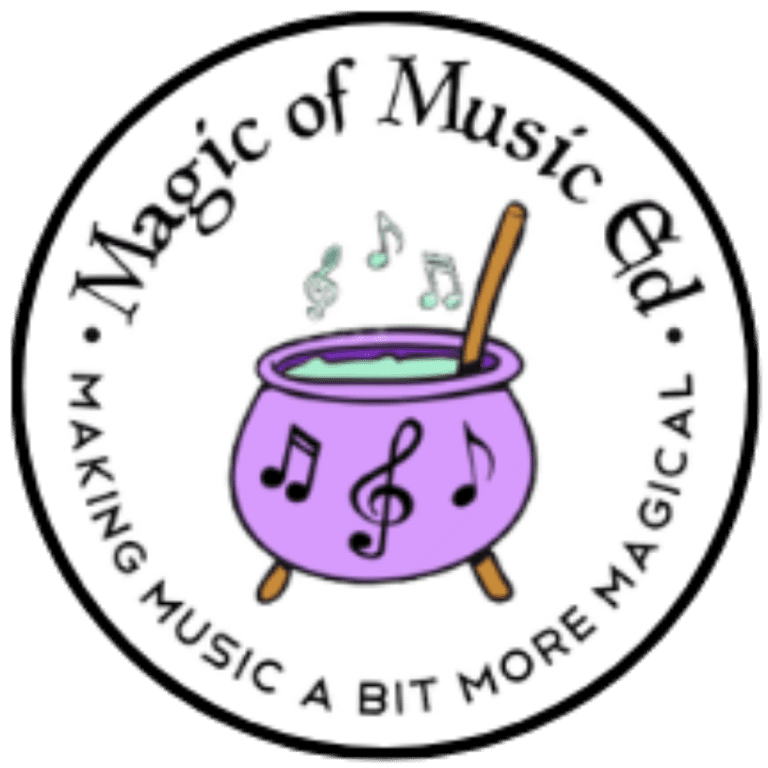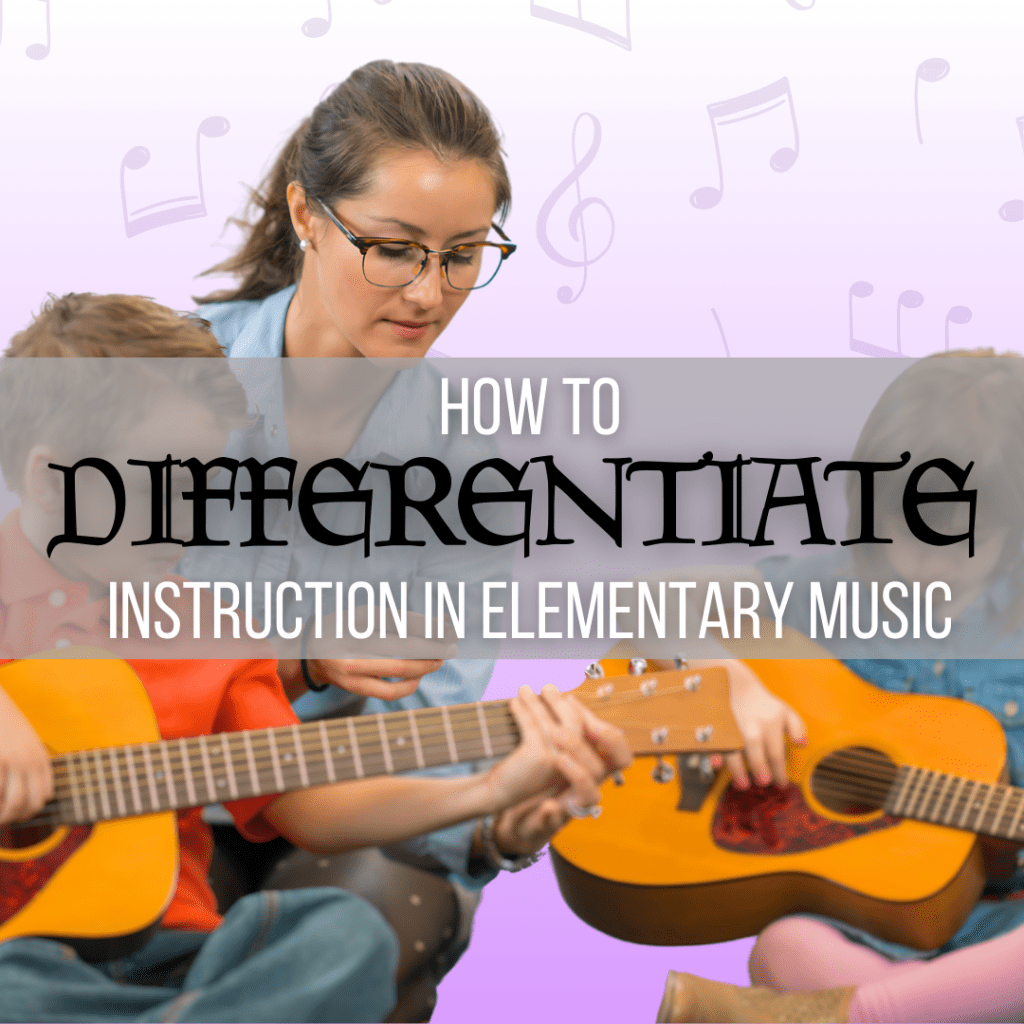Imagine this: you’re standing in front of your class, and while some students are eagerly participating, others are staring back at you with that deer-in-headlights look. Sound familiar? Teaching elementary music means working with students who learn in all kinds of ways. Conveniently, that’s where differentiation comes in. In fact, knowing how to differentiate your lessons can make all the difference—not by adding more work but by making small adjustments that meet students where they are. So, let’s explore how you can quickly and effectively learn how to differentiate instruction in your elementary music classroom.
What Is Differentiation in Elementary Music?
Differentiation means helping students learn in a way that works best for them. Furthermore, it’s not about creating completely different lessons for every student. Instead, it’s about making some small adjustments to help everyone succeed.
Although some students need to see things clearly, others need to hear explanations. Plus, some learn best by moving or doing. By focusing on these differences, you can ensure your elementary music students remain engaged and make progress. In essence, knowing how to differentiate effectively is key to making this happen.
Differentiate for Different Learning Styles

Engage Your Visual Learners
- Show videos that highlight important concepts like rhythm or dynamics.
- Use color-coded visuals, like rhythm cards or sheet music.
- Write out song lyrics or solfege patterns where students can easily see them.
Activate Your Auditory Learners
- Practice call-and-response exercises to reinforce key ideas in elementary music.
- Let students listen to music and identify rhythms, dynamics, or instruments.
- Use verbal instructions and explanations to make concepts clearer.
Energize Your Tactile & Kinesthetic Learners
- Teach rhythms with body percussion, a great hands-on activity for elementary music students.
- Include movement-based activities, like stepping to the beat or dancing to songs.
- Provide hands-on instruments, like rhythm sticks or drums, to actively engage learners.
How to Differentiate Music Instruction

1. Start with Student Choice
Let students make small decisions, such as choosing their instrument or picking a way to demonstrate a rhythm (clapping, stepping, or playing it).
*Remember: Students need to show appropriate classroom behavior to earn the privilege of student choice!
2. Group Students by Skill or Interest
- Skill Groups: Group students by their comfort level with the material in your elementary music lesson. For example, one group can work on more advanced tasks while another practices foundational skills.
- Interest Groups: Start by letting students choose how to differentiate activities or music topics they’re curious about. As a result, they’ll likely enjoy exploring a specific part of a song, creating movements, or collaborating on a performance idea.
3. Differentiate by Grade Level
Adapting lesson materials for different age groups is an important part of differentiation in elementary music:
- Kindergarten – 2nd Grade: Younger students benefit from lessons focused on movement, exploration, and simple patterns. So, the use of props like rhythm scarves, bean bags, or colorful visuals makes abstract concepts more concrete.
- 3rd – 5th Grade: Older students are ready for more structured tasks, like reading music notation, learning about musical forms, or participating in group performances. That being the case, I recommend including opportunities for basic composition or improvisation.
- Tailor lesson plans and shared activities for different age groups: Try these FREE 4 music lesson plans for teaching orchestra seating to grades 2-5!
4. Break It Into Steps
Next, an important way to differentiate is to scaffold your activities by breaking them down into manageable pieces:
- Practice note names.
- Practice fingerings on an instrument.
- Sing rhythms or articulations before playing.
- Clap or tap the rhythm to internalize it.
- Compose a variation on a pattern or melody.
- Combine steps to create a full performance.
5. Use Technology
When determining how to differentiate, try tools like Chrome Music Lab or Noteflight. These essential aids allow students to explore music concepts at their own pace. Honestly, these are great for independent or station-based activities.
Summing it up!
In short, differentiation doesn’t have to be complicated or hard. By learning how to differentiate effectively, you can help every student feel seen in your elementary music classroom. Try one of these strategies and leave a comment letting me know how it goes with your students!
Don’t forget to grab your free resources from The Chamber of Freebies to save time and make teaching elementary music a little easier. Not a member? Sign up for FREE here! 🙂

